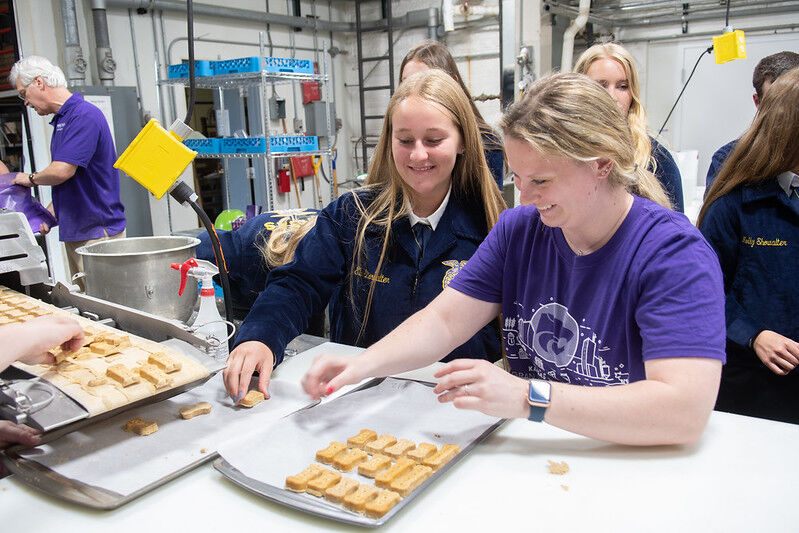The reaction was priceless.
Faced with the prospect of tasting a dog biscuit during the Kansas FFA convention recently, one young lady wrinkled her nose, relaxed and gave it a try.
It tasted better than she expected, she said.
She was one of several Kansas FFA members who flooded the Kansas State University campus for the annual gathering, attending many workshops taught by faculty in K-State’s College of Agriculture.
Greg Aldrich, an associate professor in grain science and coordinator of the pet food program, led the students through a session titled, EPAW – Every Pet A Wildcat.
K-State’s pet food lab includes industrial stand mixers, ovens and a moulding machine that makes dog biscuits with a “KSU” imprint. Aldrich told the FFA members that the university’s pet food program focuses on research and the science behind the ingredients they use.
Aldrich also likes experimenting with different flavored biscuits, “and they’re all safe for humans to taste,” he said.
Aldrich and the students mixed dough for cheddar and regular flavored biscuits, and poured it into the moulding machine. While the biscuits baked, Aldrich talked to the students about the science that’s involved with the ingredients they just combined.
In this case, he said, the binding agent was gluten from wheat, but Aldrich has also tried using sorghum, gelatin and egg whites.
When the biscuits came out of the oven, the students were allowed to taste their creations; a variety of reactions ensued. One hesitant FFA member described the experience as “similar to eating a thick wheat cracker. Really dry, but good.”
Most students only took a small bite, but one young man had no such reservations, eating almost three whole biscuits. Asked why, he said: “I wanted to try both flavors, and they were really good.”
Aldrich said hands-on opportunities for students to use all of their senses are important to their education and development.
“It makes it real,” he said. “So much of what we do in learning is intangibles or abstractions—words on a page—so when we can bring students into a manufacturing environment and give them (a chance to) touch, taste, smell, it reinforces what they’ve learned in their books…. They’ll never forget it.”



